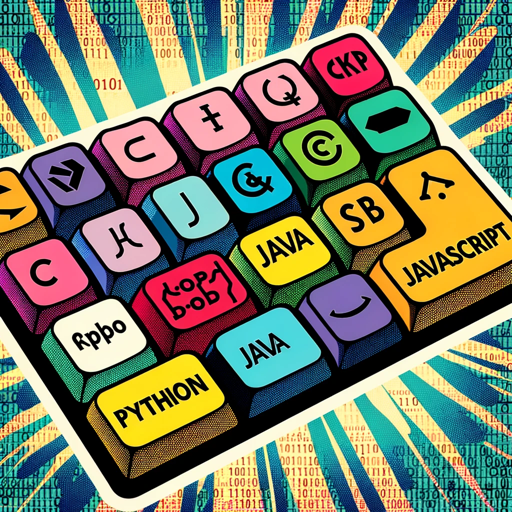FHIR Medical Measurement Converter-medical measurement and code conversion tool
AI-powered precision in medical data conversion
Convert DICOM to FHIR JSON for US Abdomen RUQ.
Generate FHIR resource for right upper quadrant ultrasound.
Map medical imaging study to FHIR format.
Produce FHIR observation for ultrasound exam.
Related Tools
Load More
Converter Pro
Converts PDF to Word (.docx), Excel (.xlsx), images (JPEG, PNG, GIF), audio, video files, and supports ZIP. Quickly generates download links.improve your productivity

MedGPT2+
I'm gaslighted by medical students 😎

Data Converter
The ultimate data transformer!🔵Seamlessly converts JSON, XML, and more into CSV with unmatched power and efficiency. #DataMagic ✨

Code Converter
Translates code between programming languages, focusing on accuracy and efficiency.

FHIR® Interop Expert
HL7-FHIR® expert for developers and healthcare data managers

Medical Translate
A medical translation assistant, providing accurate translations of medical texts and conversations.
20.0 / 5 (200 votes)
Introduction to FHIR Medical Measurement Converter
FHIR Medical Measurement Converter is a specialized tool designed to handle the conversion, interpretation, and structuring of medical measurement data within the FHIR (Fast Healthcare Interoperability Resources) framework. The primary purpose of this tool is to facilitate the accurate mapping and transformation of medical measurements from various sources into standardized FHIR resources, which are essential for ensuring interoperability in healthcare data systems. For example, in a scenario where multiple healthcare systems need to share patient blood pressure readings, FHIR Medical Measurement Converter can standardize the data format, ensuring that it is compatible across different systems, thereby enabling seamless data exchange and integration.

Main Functions of FHIR Medical Measurement Converter
Data Standardization
Example
Converting blood glucose levels from different units (e.g., mg/dL to mmol/L) to a standardized format within a FHIR Observation resource.
Scenario
A healthcare provider receives patient data from various labs, each using different units for glucose measurements. The converter standardizes these values into a consistent unit, allowing for accurate comparisons and analyses across all patient records.
FHIR Resource Structuring
Example
Structuring raw data from a DICOM file into a FHIR Observation resource that includes the appropriate LOINC code.
Scenario
A radiologist needs to include imaging data in a patient's FHIR record. The tool can extract relevant data from the DICOM file, map it to the correct LOINC code, and create a structured FHIR resource, ready for integration into the patient’s electronic health record (EHR).
Interoperability Enhancement
Example
Mapping SNOMED CT codes to LOINC codes within a FHIR Observation resource to ensure consistency across different healthcare systems.
Scenario
When a patient moves between healthcare providers, their medical data, including diagnostic codes, need to be transferred. The converter can map these codes to LOINC within FHIR resources, ensuring that the receiving provider can interpret the data correctly, regardless of the original coding system.
Ideal Users of FHIR Medical Measurement Converter
Healthcare Providers
Clinicians and healthcare facilities that need to standardize patient measurement data for better interoperability across different health systems. By using the FHIR Medical Measurement Converter, they can ensure that data from various sources are accurately integrated into their EHR systems, facilitating better patient care.
Health IT Developers
Software developers and IT professionals working on healthcare applications that require the integration of FHIR resources. They can leverage the FHIR Medical Measurement Converter to simplify the process of converting raw medical data into standardized FHIR formats, ensuring that their applications are compliant with interoperability standards.

Guidelines for Using FHIR Medical Measurement Converter
Step 1
Visit aichatonline.org for a free trial without login, also no need for ChatGPT Plus.
Step 2
Input or upload the medical measurement data you want to convert. The tool supports a wide range of formats and types, including text, CSV, and FHIR resources.
Step 3
Select the type of conversion you need. Options may include unit conversion, FHIR resource generation, or LOINC code matching. The interface will guide you through available choices.
Step 4
Review the converted data output. You can download the results in various formats, or directly integrate them with your existing systems via API.
Step 5
Explore additional features, such as custom templates or batch processing, for more advanced use cases like research, clinical trials, or large-scale data integration.
Try other advanced and practical GPTs
Web Browser Pilot
Harness AI for seamless web browsing and information analysis.

Grasshopper for Rhino
AI-powered parametric design for Rhino

Natalia Beauty World
Empower Your Beauty with AI
Organic Synthesis Chem Lab
AI-powered Organic Synthesis Chem Lab

Claude 3
AI-powered assistance for all your needs.

asif-claude
AI-Powered Tool for Your Needs

Automata Expert
AI-powered Automata Theory Expert

UE5 Helper
AI-powered assistant for UE5 developers.

Basic English Editor
AI-powered tool for clear communication

GPT Text to Voice
AI-powered text to voice conversion.

PDF to Excel Wizard
AI-Powered PDF to Excel Tool

Audio Plugin Engineer
AI-powered JUCE plugin solutions

- Data Analysis
- Research Projects
- Clinical Trials
- Unit Conversion
- Code Mapping
Frequently Asked Questions about FHIR Medical Measurement Converter
What types of medical data can I convert?
The FHIR Medical Measurement Converter supports a wide range of medical data types, including lab results, imaging data, and patient observations. It can handle text files, CSV formats, and direct input from FHIR resources.
Can I convert data in bulk?
Yes, the tool allows for batch processing of multiple files at once. This is particularly useful for large-scale research projects or clinical trials where multiple data sets need conversion.
How accurate is the conversion process?
The conversion algorithms are designed to be highly accurate, especially when mapping to standardized codes like LOINC. Regular updates ensure the tool stays aligned with the latest medical standards.
Is there any support for custom conversion needs?
Yes, you can customize the conversion templates to match specific institutional or research requirements. This includes setting custom units, creating unique mappings, or applying specific filters to the data.
How secure is my data during conversion?
Data security is a top priority. The tool employs robust encryption methods during data transfer and storage. All processed data is deleted after conversion unless explicitly saved by the user.